Visiting Kuantan: Gua Charah
I often find it very difficult to find and reach the various destinations that are found in Kuantan. Most are unmarked and unless you have fore knowledge of it will often miss such places, roads leading to them are often not properly kept or neglected and tourist’s guides does not specifically market them enough. Yet their elusiveness makes them all the more alluring, akin to finding a treasure no one has chance upon before, it also makes them less crowded and truer to their original purpose. Take for example Gua Charah, a limestone formation located in the middle of an oil palm plantation that is housing a Thai Buddhist temple, one held scared because of various features in cave formation itself. Yet though you can see it miles away, be watchful for a sign before the turnoff to Sungai Lembing else you miss it because it is a single lane small tarred road leading into a vast palm oil plantation. The road itself is in bad condition and often full of holes, when two cars are headed towards each other each must give way since the road cannot accommodate both, rain often leaves muddy stretches and potholes filled with water are hidden danger and lastly lorries carrying harvested palm fronds do at times use the exit. Yet the jewel at the end is rewarding and a well kept secret.
You start you journey by being met with a metal stairway leading up to the main temple and monk’s abode. Parking is charged a nominal fee of RM2 for cars for temple maintenance. A brief registration and donation is required at the office before descending further. Here monks in orange habits carry out their daily chores, chanting and praying, doing the laundry, cooking the daily meals and taking care of the various shrines. Often the place is frequented by pilgrims wishing to make prayers but tourists are also often seen, if required a guide can be asked to accompany you up in case you need help. From the office it is a steep climb of steel stairways, rock and dirt ground, often one might need to pause to catch ones breath ever so often. Take time to see your surroundings as limestone formations are found in varying beautiful shapes and sizes and as you near the top you can see a bird’s eye view of your surrounding.
Once you get to your destination, which is a huge cave mouth a guide will take you onwards, at the ready to explain the cave’s various features and a brief history of the place. Often these are Indian lads, children of the caretakers there making some pocket money but they are fully knowledgeable with their information. The main features here are the rock formations and each has its own tale, the reclining gold Buddha at the end of the tunnel and the history of the place itself. Over the ages, rainwater has sculpted the interior cavern in myriad of forms, some resemble identifiable real life counterparts and thus makes the place ever more intriguing.
The guide will tell you that a monk from Thailand was the first one to reach the place, finding a place to meditate and pray. Noticing the various significant features here and also finding spiritual guidance he set out to found the monastery which stands today. More and more disciples soon joined him and the present monks are the current caretakers. A legend also tells that the caves are inhabited by a white snake (most probably albino) that takes on varying sizes, not often seen it is said that anyone chancing a glimpse of it is blessed and is a sign of good luck. I haven’t been fortunate enough to witness such a creature but the lad with me said he saw it himself before.
The initial entry you’ll find yourself inside a large cavern, whistling winds can be heard clearly as you walk by. Scattered throughout the caverns are various shrines to different deities or altars at significant worship sites. The first you’ll see is a stalagmite at a high ledge near the entrance, it has the shape and outline of Kuan Yin as I was told and looking up it does resemble the Goddess of Mercy in a fashion. As you walk past you can give donations at each of the stops and light incense to the various deities. Other interesting formations include a rock that resembles a fish, a cavern wall with the shape of a white elephant and a wall impression that mimics a woman with a mirror. The way is well lit though care is still needed as the floors are often covered in water pools and guano and terrain is uneven so scratch those high heels. At the end of the journey in a large cavern you’ll find the Reclining Buddha, offer prayers or just pose with it. It is said that during certain time of the year and day, a hole in the roof of the cave will shine light directly onto the Buddha’s face, if you wish to see it enquire beforehand and plan accordingly.
Thus ends your tour, take a leisure walk back down and off to the next destination.
Thus ends your tour, take a leisure walk back down and off to the next destination.

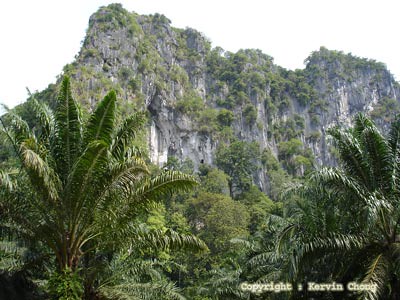
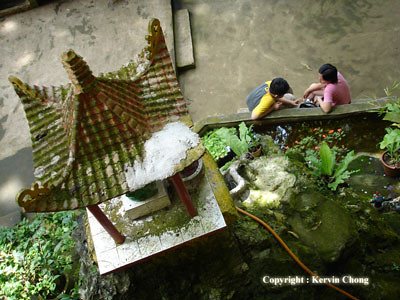
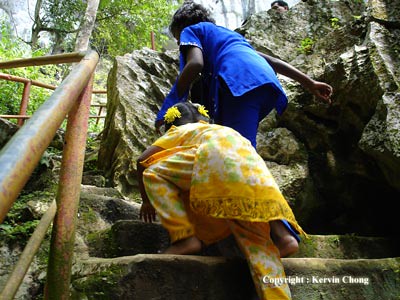
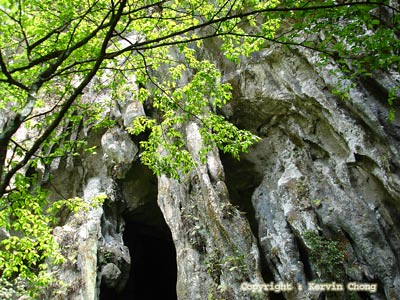
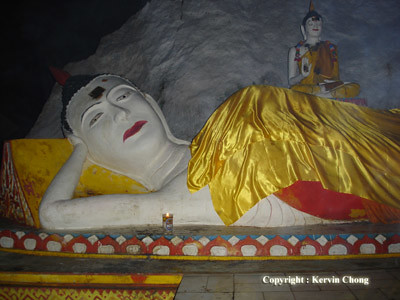
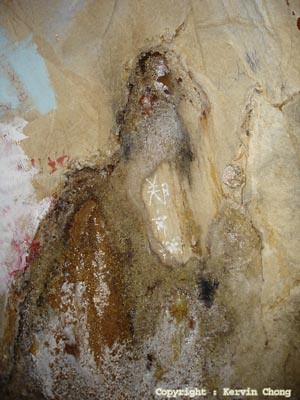
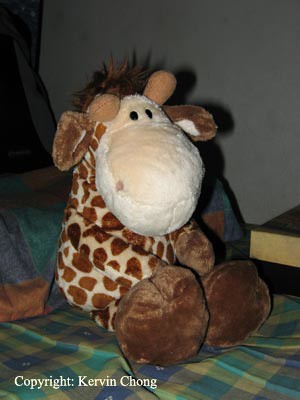

3 comments:
Hey, I have been there before. I remember it as Gua Charas? It is not very far from Sungai Lembing or something like that, right? In the kelapa sawit plantation and the climb, fuwah, very high. Plus the guano so slippery in the cave.
Yes it is the same, spelling of the name is debatable, it's usually reffered to as Charas or Charah, official brochures show it as Charah. Hehe not too much bat guano, been to Gomantong and it was a few feet plus billions of roaches :D
hallo kervin
i will be organizing a visit to gua charah for a group of thai monks n temple friends. I've been to gua charah last year but the place was closed- gated n dogs let out. It was an impromptu visit w/o plans.
Would really appreciate if you could let me have a contact of a reliable guide or betta still the contact no. of the caretaker/ monk in charge of the building at the entrance, if you have any lead.
LP Lim
email : lovespaniel@gmail.com
Post a Comment